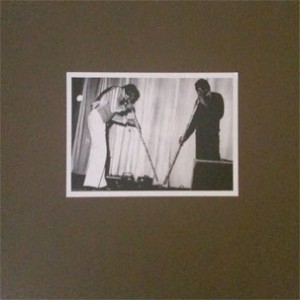 A rather impressive set of archival recordings unearthed here.  Both Hartmut Geerken and Michael Ranta are known for a impressive list of collaborations with major characters stretching back many decades, yet they both have fairly small discographies.  To narrow it down a little, I would say that Geerken is probably best known for his associations with Sun Ra who he brought to Egypt and later documented in the highly desirable book “Omniverse”.  Michael Ranta likely rings bells in heads immersed in the psychedelic sounds of his group Wired and his one off collaboration LP with Takehisa Kosugi and Toshi Ichiyanagi titled “Improvisation Sep. 1975”.  Of course these mentions only scratch the surface of these men’s accomplishments and the point of my writing here is not to review their entire histories.  Instead I want to focus on the 11 sides of unheard material in this box set.  “The Heliopolar Egg” is made up of recordings from a tour to the far east in 1976 which saw the duo landing in Teheran, Calcutta, Dacca, Manila, Seoul, and Osaka (as well as a few cities not documented in this set such as Karachi and Kabul).  Getting a gig for outside music in any of these cities save Osaka in the modern day would be quite a feat, so it can only be imagined that this was even more of a bizarre musical exchange in that long ago year.  What is likewise very impressive is the list of instruments they were carting with them.  One can only hope that the venues provided some of the larger examples such as piano, xylophone and marimba. Nonetheless, the variety of bells, gongs, horns, electronics and sundry electronics must have been making the hopefrom country to country with the musicians.  Unfortunately one thing this box set lacks is recollections on what must have been an amazing adventure and apparently a multi-media spectacle from the bibliographic references listed on Geerkin’s web site.  We are presented only with this list of instrumentation, a septet of black and white photographs, a list of dates and places, and the music itself.  But this is of not great consequence as the music alone is enough to speak volumes.
A rather impressive set of archival recordings unearthed here.  Both Hartmut Geerken and Michael Ranta are known for a impressive list of collaborations with major characters stretching back many decades, yet they both have fairly small discographies.  To narrow it down a little, I would say that Geerken is probably best known for his associations with Sun Ra who he brought to Egypt and later documented in the highly desirable book “Omniverse”.  Michael Ranta likely rings bells in heads immersed in the psychedelic sounds of his group Wired and his one off collaboration LP with Takehisa Kosugi and Toshi Ichiyanagi titled “Improvisation Sep. 1975”.  Of course these mentions only scratch the surface of these men’s accomplishments and the point of my writing here is not to review their entire histories.  Instead I want to focus on the 11 sides of unheard material in this box set.  “The Heliopolar Egg” is made up of recordings from a tour to the far east in 1976 which saw the duo landing in Teheran, Calcutta, Dacca, Manila, Seoul, and Osaka (as well as a few cities not documented in this set such as Karachi and Kabul).  Getting a gig for outside music in any of these cities save Osaka in the modern day would be quite a feat, so it can only be imagined that this was even more of a bizarre musical exchange in that long ago year.  What is likewise very impressive is the list of instruments they were carting with them.  One can only hope that the venues provided some of the larger examples such as piano, xylophone and marimba. Nonetheless, the variety of bells, gongs, horns, electronics and sundry electronics must have been making the hopefrom country to country with the musicians.  Unfortunately one thing this box set lacks is recollections on what must have been an amazing adventure and apparently a multi-media spectacle from the bibliographic references listed on Geerkin’s web site.  We are presented only with this list of instrumentation, a septet of black and white photographs, a list of dates and places, and the music itself.  But this is of not great consequence as the music alone is enough to speak volumes.
Each LP represents another city on the tour beginning with Tehran, Iran and the set spans less than a month from the first recording to the last. Â Some of the sides are actually rather short and arbitrarily end in the midst of performance to be continued on the flip side of the disc. Within these constraints, the duo expand massively into heavily psychedelic experimental territory. Â Varying from disc to disc enough to keep away any sense of monotony, there is often the presence of very cosmic analog electronics pointing to what Ranta had to bring to the table in his work with Kosugi and Ichiyanagi, or at least gained from it, as it echoes the beauty of Kosugi’s “Catch Wave” LP released the previous year. Â Along with this are acoustic instruments played with the abandon of The Taj-Mahal Travellers or the ecstasy of Limbus 4 and Angus MacLise. Â It is music to divinely drift to on one side while another side offers a multitude of little instruments (Famoudou Don Moye from the Art Ensemble of Chicago was another of Geerkin’s frequent collaborators) in mind freeing jams that are so open you could fall into them. Â One can only wonder what people in Bangladesh and The Philippines made of this music as it would have been, and still is, a mind bending experience in the west. Â Of course it might have been these audiences which encouraged them to explore so far out. Â As by the time the set ends in Osaka, Japan the duo are playing in what might be called the outer reaches of avant-garde classical music (one of Ranta’s students was Stomu Yamash’ta). Â From long, unnamed, free form improvisations, we have come to named pieces associated with named composers, one of them being Toshi Ichiyanagi. Â Despite this, the music loses none of the fire of the earlier discs and ends up in cosmic territory again with the closing track “Coda” featuring Ichiyanagi on guest synthesizer (apparently Kosugi was playing on this concert as well, but doesn’t appear on this recording).
This music comes highly recommended and hopefully will see a proper reissue on CD at some point. Â This is desirable for a few reasons. Â One is the above mentioned splitting of concerts into two sides. Â The other is the fact that even with six LPs, this is not the complete document of the tour. Â As I mentioned above, this set includes 11, not 12 sides, as the first LP is single sided. Â This is made painfully obnoxious by the realization that there is a deluxe edition of this set which puts a concert from Delhi on that blank side. Â In an ultimate move of collector scum exclusivity, this 12 sided variant appeared in an edition of only 26 copies. Â On top of this, Qbico have since released a very limited 10 LP box set compilation that includes a full LP in Bangkok from the same tour in amongst a variety of other artist’s work. Â Why couldn’t there be a seven LP box to include everything in the first place?
Already “The Heliopolar Egg” box set itself was very limited. Â I’ve never seen a number given, but very few were around and only with a small number of distributors. Â And while an expensive item even in the regular edition, the set is rather plainly packaged. Â The box itself is decorated with a black and white pasted on graphic on the top and bottom. Â Inside are three single sided, black and white, A4 inserts while the LPs themselves only sport blank white labels. Â The box itself seems to exist in a few variants. Â Mine is plain brown, but I have seen others that have a crosshatched black and white pattern on them.
In many ways, the limitation does make sense however.  How many copies of a multi-LP set by two rather obscure characters could you realistically expect to sell, especially in these days of all too frequent uploading and downloading?  It is a giant financial risk to pour the funds into putting this music out into the world.  So can we really blame Emanuele Pinotti for making just the number he expected to sell?  In the end I am thankful to be not only alerted to the fact that this music was made and recorded, but also be able to hear it repeatedly.  Given the quality of the performances, I do hope that some other daring soul does republish this in the future as I’m  sure when the word slowly gets out, there certainly will be more adventurous souls want to explore these concert recordings in depth.  And geez, Geerken is a published author, some liner notes please!
Qbico – qbico 101
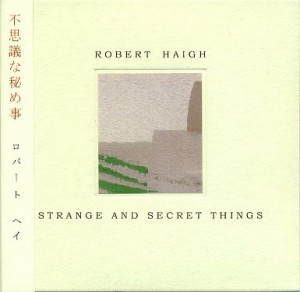 Robert Haigh should be a name familiar to more intrepid record buyers of the 1980’s. Â I discovered his EPs on L.A.Y.L.A.H. Anti-Records in the bins of Tower Records, where the label name associated his music with purveyors of sonic perversity such as Nurse With Wound, Organum, Current 93, Coil, and The Hafler Trio. Â In fact it was in their company that I first heard his music tucked between those very artists on “The Fight Is On” compilation, oddly enough with a solo piano piece. Â It seemed out of place to say the least, but the EPs “Juliet of the Spirits” and “Music from the Ante Chamber” made more sense with their further fleshing out of the sombre aesthetic with additional instrumentation. Â They were not dark and challenging like his associates, I was later to find out that he had worked out those desires when working under the name Sema on a series of privately released LP for his Le Rey label. Â After those early releases, there was one final LP for United Dairies called “A Valentine Out of Season” – a solo piano record on Nurse With Wound’s label. Â Steve later told me that he did it as Robert had promised to give him a great experimental record if he would only release this piano LP. Â Of course the experimental record never did surface, and all United Dairies did to follow was to release the rather misleadingly titled cassette “The Best of Robert Haigh” which was largely taken up by Robert’s early rock based band Fote. Â Robert’s music was really not reaching the right audience through such an experimental outlet. Â Its final appearance in the 1980’s was the CD “A Waltz in Plain C” on the only very briefly restarted and then shuttered Le Rey. Â There was such a lack of audience for this follow up that the distributor I was buying from told me they imported only 9 copies of this disc into the states. Â I don’t think I saw anyone else carry it either. Â After that Robert disappeared with occasional rumors of him resurfacing as a techno artist, which did end up to be true. Â This was confirmed by die hard fan John Podeszwa of the
Robert Haigh should be a name familiar to more intrepid record buyers of the 1980’s.  I discovered his EPs on L.A.Y.L.A.H. Anti-Records in the bins of Tower Records, where the label name associated his music with purveyors of sonic perversity such as Nurse With Wound, Organum, Current 93, Coil, and The Hafler Trio.  In fact it was in their company that I first heard his music tucked between those very artists on “The Fight Is On” compilation, oddly enough with a solo piano piece.  It seemed out of place to say the least, but the EPs “Juliet of the Spirits” and “Music from the Ante Chamber” made more sense with their further fleshing out of the sombre aesthetic with additional instrumentation.  They were not dark and challenging like his associates, I was later to find out that he had worked out those desires when working under the name Sema on a series of privately released LP for his Le Rey label.  After those early releases, there was one final LP for United Dairies called “A Valentine Out of Season” – a solo piano record on Nurse With Wound’s label.  Steve later told me that he did it as Robert had promised to give him a great experimental record if he would only release this piano LP.  Of course the experimental record never did surface, and all United Dairies did to follow was to release the rather misleadingly titled cassette “The Best of Robert Haigh” which was largely taken up by Robert’s early rock based band Fote.  Robert’s music was really not reaching the right audience through such an experimental outlet.  Its final appearance in the 1980’s was the CD “A Waltz in Plain C” on the only very briefly restarted and then shuttered Le Rey.  There was such a lack of audience for this follow up that the distributor I was buying from told me they imported only 9 copies of this disc into the states.  I don’t think I saw anyone else carry it either.  After that Robert disappeared with occasional rumors of him resurfacing as a techno artist, which did end up to be true.  This was confirmed by die hard fan John Podeszwa of the 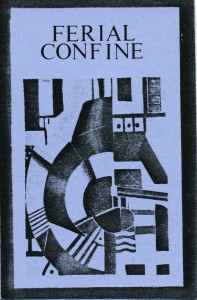 The only release by Ferial Confine to come out in the 1980’s that could be considered to have been available would be this chunk of heavy noise and electronics.  Sounding perhaps indebted to The New Blockaders and Vortex Campaign, people would later look back for this cassette because of TNB’s heavy borrowing of Ferial Confine materials for releases in the 1990’s.  Although it was far from obvious at the time because of the lack of any detail on the cover, and neither Broken Flag nor Ferial Confine including contact details on any releases, Ferial Confine was actually a solo project of Andrew Chalk.  By the time I discovered that these two were the same, I had heard Andrew’s solo track “Thack” on Broken Flag’s “Never Say When” compilation LP which was quite the opposite of this cassette.  As alluded to above, the high pitched noise featured here inhabits a similar territory to early recordings by The New Blockaders which for me was marked by an almost slow motion mass of moving sounds.  Not a harsh wall of noise like so many other Broken Flag releases of the time, there is an almost psychedelic aspect to the sounds of Ferial Confine.  The only thing punishing here really is the extreme frequencies.  The sounds themselves are not on attacking or brutal.  Ferial Confine can almost be seen as a compliment to The New Blockaders, which is perhaps why Richard Rupenus though to combine the materials of both starting with releases such as “The Final Recordings” released on Dom Bartwuchs in 1991 as well as many subsequent releases.  Andrew himself was not particularly satisfied with the results however and asked Gary Mundy to delete “Meiosis” not long after its release.  Being an established label, a number of copies had already reached distribution channels, but it remained one of the more obscure Broken Flag releases.  Not doubt this was also in part due to this project not having released anything else that was easily available, something shared by some of the other artists being released on cassette in those last few years of the first run of Broken Flag – a few years previous to collectors looking back and wanting to amass and discover the label’s entire output.  Because of the above mentioned associations, it did become very sought after later and what copies that were circulated now change hands for good money and are no doubt mixed in with a number of  pirate copies as the Broken Flag cassettes are rather easy to counterfeit (I remember NEds in particular was trading heavily in these in the 1990’s).  In some ways I can see why Andrew would not be as happy with this as it is not quite as solid as the more obscure cassette “The Full Use of Nothing” (an edition of only 50 which was thankfully given a proper LP edition by Fusetron in 1999) or even the archival “First, Second and Third Drop” published on CD by Siren Records in 2008.  There seems to be less unity among the pieces on “Meiosis” contrasting the opening symphony of noises on side A with short pieces of analog electronics or outdoor recordings of a more pastoral nature on the B side in the midst of which was a noisier piece.  Some of this sound simpler, more primitive and less complete.  As a whole the cassette is of its time and stands out for some very strong tracks.  The rest hold their ground as decent and worth listening to in part because of their contrast to what else was de rigueur at the time.  At the time, Ferial Confine stood out for me, at first for the untitled track on the “New Babel” cassette compilation (one of the above mentioned releases with no contact information included) which lead me to seek out this cassette.  Part of this probably was because the pure noise aesthetics of Ramleh, et al were digging into wasn’t appealing to me (that said Ramleh did an amazing about turn right around this time and produced a few godhead releases).  I guess part of this might be what kept Ferial Confine to be a short lived project as Andrew Chalk explored very different directions in very delicate and quiet music which he continues to this day.  Ferial Confine only existed around 1985 and 1986 with Andrew playing around with some other names as well, some of which he no longer remembers.  In retrospect, perhaps it was a cage he was trying to escape or perhaps use to confine some of the more beastly aspects of noise music.  Going through a similar evolution in my listening at the time probably helps explain why I still hang onto this cassette and enjoy listening to it occasionally.  As for the actual real artifact, the j-card is low density (as in some of the black are not all that dense) photocopy onto blue card which is hand cut a little unevenly. The cassette itself is an unlabeled TDK AD 60 – cassettes from Broken Flag came on a few different kinds of blanks but never had labels.  This homemade aesthetic is what made it so easy to pass off pirate copies later on, especially as most people had not seen the original cassettes to compare with.  The cover art itself seems to be of yee olde Constructivist fashion, nothing I recognized as I still haven’t delved very deeply into that movements history.  The only other details on the cassette are the title and catalog number on the spine and the label name and year on the inside.  No titles or anything else.  But that was the BF aesthetic.
The only release by Ferial Confine to come out in the 1980’s that could be considered to have been available would be this chunk of heavy noise and electronics.  Sounding perhaps indebted to The New Blockaders and Vortex Campaign, people would later look back for this cassette because of TNB’s heavy borrowing of Ferial Confine materials for releases in the 1990’s.  Although it was far from obvious at the time because of the lack of any detail on the cover, and neither Broken Flag nor Ferial Confine including contact details on any releases, Ferial Confine was actually a solo project of Andrew Chalk.  By the time I discovered that these two were the same, I had heard Andrew’s solo track “Thack” on Broken Flag’s “Never Say When” compilation LP which was quite the opposite of this cassette.  As alluded to above, the high pitched noise featured here inhabits a similar territory to early recordings by The New Blockaders which for me was marked by an almost slow motion mass of moving sounds.  Not a harsh wall of noise like so many other Broken Flag releases of the time, there is an almost psychedelic aspect to the sounds of Ferial Confine.  The only thing punishing here really is the extreme frequencies.  The sounds themselves are not on attacking or brutal.  Ferial Confine can almost be seen as a compliment to The New Blockaders, which is perhaps why Richard Rupenus though to combine the materials of both starting with releases such as “The Final Recordings” released on Dom Bartwuchs in 1991 as well as many subsequent releases.  Andrew himself was not particularly satisfied with the results however and asked Gary Mundy to delete “Meiosis” not long after its release.  Being an established label, a number of copies had already reached distribution channels, but it remained one of the more obscure Broken Flag releases.  Not doubt this was also in part due to this project not having released anything else that was easily available, something shared by some of the other artists being released on cassette in those last few years of the first run of Broken Flag – a few years previous to collectors looking back and wanting to amass and discover the label’s entire output.  Because of the above mentioned associations, it did become very sought after later and what copies that were circulated now change hands for good money and are no doubt mixed in with a number of  pirate copies as the Broken Flag cassettes are rather easy to counterfeit (I remember NEds in particular was trading heavily in these in the 1990’s).  In some ways I can see why Andrew would not be as happy with this as it is not quite as solid as the more obscure cassette “The Full Use of Nothing” (an edition of only 50 which was thankfully given a proper LP edition by Fusetron in 1999) or even the archival “First, Second and Third Drop” published on CD by Siren Records in 2008.  There seems to be less unity among the pieces on “Meiosis” contrasting the opening symphony of noises on side A with short pieces of analog electronics or outdoor recordings of a more pastoral nature on the B side in the midst of which was a noisier piece.  Some of this sound simpler, more primitive and less complete.  As a whole the cassette is of its time and stands out for some very strong tracks.  The rest hold their ground as decent and worth listening to in part because of their contrast to what else was de rigueur at the time.  At the time, Ferial Confine stood out for me, at first for the untitled track on the “New Babel” cassette compilation (one of the above mentioned releases with no contact information included) which lead me to seek out this cassette.  Part of this probably was because the pure noise aesthetics of Ramleh, et al were digging into wasn’t appealing to me (that said Ramleh did an amazing about turn right around this time and produced a few godhead releases).  I guess part of this might be what kept Ferial Confine to be a short lived project as Andrew Chalk explored very different directions in very delicate and quiet music which he continues to this day.  Ferial Confine only existed around 1985 and 1986 with Andrew playing around with some other names as well, some of which he no longer remembers.  In retrospect, perhaps it was a cage he was trying to escape or perhaps use to confine some of the more beastly aspects of noise music.  Going through a similar evolution in my listening at the time probably helps explain why I still hang onto this cassette and enjoy listening to it occasionally.  As for the actual real artifact, the j-card is low density (as in some of the black are not all that dense) photocopy onto blue card which is hand cut a little unevenly. The cassette itself is an unlabeled TDK AD 60 – cassettes from Broken Flag came on a few different kinds of blanks but never had labels.  This homemade aesthetic is what made it so easy to pass off pirate copies later on, especially as most people had not seen the original cassettes to compare with.  The cover art itself seems to be of yee olde Constructivist fashion, nothing I recognized as I still haven’t delved very deeply into that movements history.  The only other details on the cassette are the title and catalog number on the spine and the label name and year on the inside.  No titles or anything else.  But that was the BF aesthetic.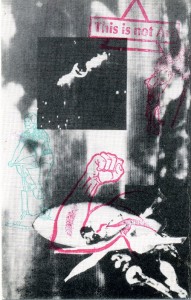 A kind of oddball release that saw very limited release of two Los Angeles area groups on a Dutch label.  This was kind of the swan song of Le Forte Four – the final recordings heard from them before they dropped off the map never to reappear until their recent reunion concert in London.  This cassette came after their 1981 LP “Spin ‘N Grin” which was a bit of a disaster for them at the time selling very little despite being a wonderful record.  Itself probably an inspiration to wind up L.A.F.M.S.  Given that previous reception, it really should be no surprise that this tape came out in an edition of only 100 and remained available at least through the early 1990’s.  I guess this was a little before people were going ga-ga pouring over the NWW list or knew what to make of their mention on the cover of The Fall’s “Dragnet” LP.  Probably adding to the confusion of whether to invest in this odd item at the time was the inclusion of the downright obscure Fat & Fucked Up on the flipside.  This eye catchingly named ensemble otherwise only had a few appearances on beautifully produced Trance Port Tapes compilations leaving them pretty well unknown to the general record (and cassette) buying public.  However, Fat & Fucked UP did however play live often and I do remember seeing them at Beyond Baroque and X=Art way back in the day.  At least one, if not both, of those bills was shared with What Makes Donna Twirl? and in particular I remember Brad Laner’s amazing guest appearance on drums at the Beyond Baroque gig.  Their side of the cassette was recorded at LACE in May of 1985 – a gig I don’t remember being at, but that was a long time ago now.
A kind of oddball release that saw very limited release of two Los Angeles area groups on a Dutch label.  This was kind of the swan song of Le Forte Four – the final recordings heard from them before they dropped off the map never to reappear until their recent reunion concert in London.  This cassette came after their 1981 LP “Spin ‘N Grin” which was a bit of a disaster for them at the time selling very little despite being a wonderful record.  Itself probably an inspiration to wind up L.A.F.M.S.  Given that previous reception, it really should be no surprise that this tape came out in an edition of only 100 and remained available at least through the early 1990’s.  I guess this was a little before people were going ga-ga pouring over the NWW list or knew what to make of their mention on the cover of The Fall’s “Dragnet” LP.  Probably adding to the confusion of whether to invest in this odd item at the time was the inclusion of the downright obscure Fat & Fucked Up on the flipside.  This eye catchingly named ensemble otherwise only had a few appearances on beautifully produced Trance Port Tapes compilations leaving them pretty well unknown to the general record (and cassette) buying public.  However, Fat & Fucked UP did however play live often and I do remember seeing them at Beyond Baroque and X=Art way back in the day.  At least one, if not both, of those bills was shared with What Makes Donna Twirl? and in particular I remember Brad Laner’s amazing guest appearance on drums at the Beyond Baroque gig.  Their side of the cassette was recorded at LACE in May of 1985 – a gig I don’t remember being at, but that was a long time ago now.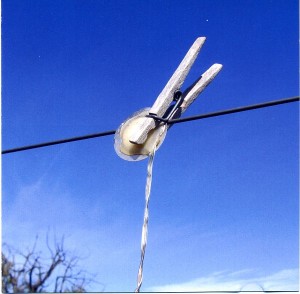 Dead metal music from the wilds of Arizona.  Abandoned like so much else in the deserts of this world, obsolete telephone wires once stood at this location and made sounds regardless of the lack of human ears.  It again signals Jeph as exceptional among the growing legions of field recorders, or “phonographers”, as he searches out the unheard and special.  In this case, what is vanishing sooner than later rather than the banality that will only slowly evolve and become nostalgic in decades to come.  There is a poetry in in Jerman’s listening, similar to the poetry that John Cage had in his questioning.  It is a sign of true listening if one can start recording the world around without any intervention and have it mirror your style.
Dead metal music from the wilds of Arizona.  Abandoned like so much else in the deserts of this world, obsolete telephone wires once stood at this location and made sounds regardless of the lack of human ears.  It again signals Jeph as exceptional among the growing legions of field recorders, or “phonographers”, as he searches out the unheard and special.  In this case, what is vanishing sooner than later rather than the banality that will only slowly evolve and become nostalgic in decades to come.  There is a poetry in in Jerman’s listening, similar to the poetry that John Cage had in his questioning.  It is a sign of true listening if one can start recording the world around without any intervention and have it mirror your style.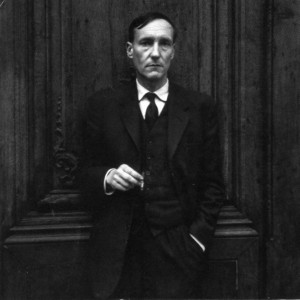 The idea of a three disc set of Burroughs’ cut-up experiments may sound more task then enjoyment but I have found this archival dig to a be a treasure.  This is a bit different the what is known on “Nothing Here Now but the Recordings” – the only previous collection of his cut-up recordings.  Whereas that 1981 LP focused on shorter pieces with more quick edits, “Real English Tea” features longer pieces, up to 44 minutes in length, that show a more casual approach to juxtaposing material.  Many alternate between radio news broadcasts and Burroughs’ own reading of newspapers or original material leaving large passages of each to present an idea.  These more large scale collages work more often with complete sentences and rather than looking to break through between the words.  It is more about atmosphere in these experiments.  Long sections of music figure into several; more so than the familiar shortwave noises used in the “Towers Open Fire” soundtrack.  Where the later most prominently return here is in an alternate version of that piece which shows curious variations and in “The Piper Pulled Down the Sky”, seemingly recorded at about the same time.  What strikes me about all of these is that they are closer to his readings.  The cuts here are only the more obvious signs of what was otherwise seamlessly put into his writing and read in one voice, not then revealing its sources so quickly.  Of course most extreme and best known examples of this is the trilology of cut-up novels “The Soft Machine”, “The Ticket That Exploded” and “Nova Express” but forever after it remained a signature of his writing style which kept his narrative from a straight and narrow line.  Dates of the recordings are hard to pinpoint at this removed vantage point but estimates in the accompanying essay suggest around 1964 and 1965, and mostly in New York despite any suggestion from the title.  These dates come with an air of authority as they are put forward by c0-curator of this anthology Barry Miles, a name that should be familiar to Burroughs scholars.  His involvement might explain the more literary nature of the recordings here in comparison with the more sound based ones by selected by members of Throbbing Gristle for the above mentioned earlier LP release.  He is also a prime position to clue us into what some the texts may come from or refer to.  Of course nothing in great detail, as that would take away from the subjective impact of hearing the recordings.  It does enough to place these recording in the perspective of Burroughs’ timeline specifying which writings point to and benefit from these experiments, as well as to point out that Burroughs is actually commenting on things that immediately precede his interjections.  Too much analysis would detract from the open associations which would seem to be the envisioned advantage of this method — the ability to discover previously unseen connections.  These recording now include an unavoidable patina of nostalgia as well for the world documented in them as well as most listeners earlier experience reading Burroughs’ words.
The idea of a three disc set of Burroughs’ cut-up experiments may sound more task then enjoyment but I have found this archival dig to a be a treasure.  This is a bit different the what is known on “Nothing Here Now but the Recordings” – the only previous collection of his cut-up recordings.  Whereas that 1981 LP focused on shorter pieces with more quick edits, “Real English Tea” features longer pieces, up to 44 minutes in length, that show a more casual approach to juxtaposing material.  Many alternate between radio news broadcasts and Burroughs’ own reading of newspapers or original material leaving large passages of each to present an idea.  These more large scale collages work more often with complete sentences and rather than looking to break through between the words.  It is more about atmosphere in these experiments.  Long sections of music figure into several; more so than the familiar shortwave noises used in the “Towers Open Fire” soundtrack.  Where the later most prominently return here is in an alternate version of that piece which shows curious variations and in “The Piper Pulled Down the Sky”, seemingly recorded at about the same time.  What strikes me about all of these is that they are closer to his readings.  The cuts here are only the more obvious signs of what was otherwise seamlessly put into his writing and read in one voice, not then revealing its sources so quickly.  Of course most extreme and best known examples of this is the trilology of cut-up novels “The Soft Machine”, “The Ticket That Exploded” and “Nova Express” but forever after it remained a signature of his writing style which kept his narrative from a straight and narrow line.  Dates of the recordings are hard to pinpoint at this removed vantage point but estimates in the accompanying essay suggest around 1964 and 1965, and mostly in New York despite any suggestion from the title.  These dates come with an air of authority as they are put forward by c0-curator of this anthology Barry Miles, a name that should be familiar to Burroughs scholars.  His involvement might explain the more literary nature of the recordings here in comparison with the more sound based ones by selected by members of Throbbing Gristle for the above mentioned earlier LP release.  He is also a prime position to clue us into what some the texts may come from or refer to.  Of course nothing in great detail, as that would take away from the subjective impact of hearing the recordings.  It does enough to place these recording in the perspective of Burroughs’ timeline specifying which writings point to and benefit from these experiments, as well as to point out that Burroughs is actually commenting on things that immediately precede his interjections.  Too much analysis would detract from the open associations which would seem to be the envisioned advantage of this method — the ability to discover previously unseen connections.  These recording now include an unavoidable patina of nostalgia as well for the world documented in them as well as most listeners earlier experience reading Burroughs’ words.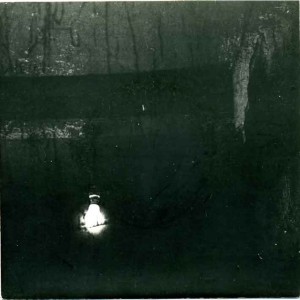 In between releases by Swell Maps, Stiff Little Fingers, Kleenex, The Raincoats and The Monochrome Set, Rough Trade unleashed this delightfully misleadingly named one off. Although the B side does feature a short song about child murderer Mary Bell (in advance of Monte Cazazza’s tribute to the same), most of the two sides are taken up by live recordings at Heathrow Airport made with an analog synth. The non-musical blats here sound more akin to something the Sonic Art Union might have subjected audiences to than the more musically structured Industrial Musik coming out of England at the time. It is a beautiful little slice of primitive electronics and random voices, and a lot of copies probably languish unplayed in the collections of people wanting to have all the Rough Trade singles. After this Simon Leonard went on to record under the names AK Process and AK-47 and by 1984 formed the quirky synth pop duo I Start Counting who were signed to Mute Records alongside Depeche Mode, Mark Stewart, Erasure and Fad Gadget.
In between releases by Swell Maps, Stiff Little Fingers, Kleenex, The Raincoats and The Monochrome Set, Rough Trade unleashed this delightfully misleadingly named one off. Although the B side does feature a short song about child murderer Mary Bell (in advance of Monte Cazazza’s tribute to the same), most of the two sides are taken up by live recordings at Heathrow Airport made with an analog synth. The non-musical blats here sound more akin to something the Sonic Art Union might have subjected audiences to than the more musically structured Industrial Musik coming out of England at the time. It is a beautiful little slice of primitive electronics and random voices, and a lot of copies probably languish unplayed in the collections of people wanting to have all the Rough Trade singles. After this Simon Leonard went on to record under the names AK Process and AK-47 and by 1984 formed the quirky synth pop duo I Start Counting who were signed to Mute Records alongside Depeche Mode, Mark Stewart, Erasure and Fad Gadget.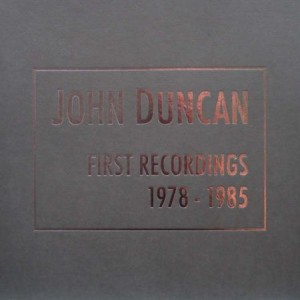 I have to admit that the concept of this box set had me very excited. There are several horribly rare early cassettes by John Duncan that I have been wanting to hear for decades. Sadly this set doesn’t include a lot of those things. One side of “No” is here, which is exciting to hear finally (coincidentally that piece has just been published online at part of the Close Radio archives). But there is no sign of “Two Solos” or the unreleased soundtracks for “Hurts So Good” and “Uberfall”, nor the early unreleased C.V Massage recordings. With that in mind I was disappointed that the first disc of this box is taken up by “Dark Market Broadcast”, a later cassette which has already been reissued on CD by Staalplaat some years ago. And the second disc is taken up by BDR Ensemble’s “Station Event”, which is one of the few early cassettes that I do own, and which was also reissued in the artist edition of the “Lowest Form of Music” CD box set. But it is hard to begrudge that, as this wonderful recording still remains little heard until this box. The big draw for me was side 5 with “No” and “Probe”, two tracks which I had never heard before. Side 6 meanwhile is one of side of the “Gain” cassette released by AQM in Japan, a scarce cassette, but also one I have and much easier to track down than the other above mentioned early tapes. The bonus DVD includes less than 30 minutes of material with “Prayer” and “Phantom”, both sold on videos by RRRecords in the States back in the 1980’s, and unfortunately has no sign of the early tapes “Right”, “Free”, “Out” or “Human Choir”, let alone the films “Hurts So Good” or “Move Forward”. So some of my disappointment comes trying to actually track down a lot of Duncan’s early material over the decades.  It wasn’t the box I had in mind, especially as the last LP is more bits and pieces than reissuing complete releases.
I have to admit that the concept of this box set had me very excited. There are several horribly rare early cassettes by John Duncan that I have been wanting to hear for decades. Sadly this set doesn’t include a lot of those things. One side of “No” is here, which is exciting to hear finally (coincidentally that piece has just been published online at part of the Close Radio archives). But there is no sign of “Two Solos” or the unreleased soundtracks for “Hurts So Good” and “Uberfall”, nor the early unreleased C.V Massage recordings. With that in mind I was disappointed that the first disc of this box is taken up by “Dark Market Broadcast”, a later cassette which has already been reissued on CD by Staalplaat some years ago. And the second disc is taken up by BDR Ensemble’s “Station Event”, which is one of the few early cassettes that I do own, and which was also reissued in the artist edition of the “Lowest Form of Music” CD box set. But it is hard to begrudge that, as this wonderful recording still remains little heard until this box. The big draw for me was side 5 with “No” and “Probe”, two tracks which I had never heard before. Side 6 meanwhile is one of side of the “Gain” cassette released by AQM in Japan, a scarce cassette, but also one I have and much easier to track down than the other above mentioned early tapes. The bonus DVD includes less than 30 minutes of material with “Prayer” and “Phantom”, both sold on videos by RRRecords in the States back in the 1980’s, and unfortunately has no sign of the early tapes “Right”, “Free”, “Out” or “Human Choir”, let alone the films “Hurts So Good” or “Move Forward”. So some of my disappointment comes trying to actually track down a lot of Duncan’s early material over the decades.  It wasn’t the box I had in mind, especially as the last LP is more bits and pieces than reissuing complete releases.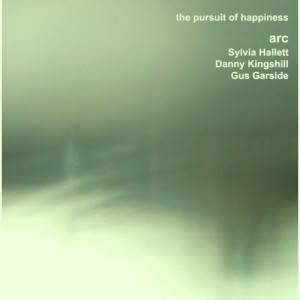 While on a veteran free improvisation label and consisting of free improvisations on violin, cello, and double bass (with occasional electronic processing and voice), this music escapes the common “free improv” style and explores playing methods more often associated with classical music. Indeed the album sounds as though it could be the work of a “contemporary composer”, but is spontaneously generated. The eleven sections balance between the tension of a classical string trio but explore areas of occasional dissonance and freedom belying their true origin. Given the varied musical histories of Sylvia Hallett, Danny Kingshill and Gus Garside, it seems obvious that the trio intentional decided to focus their attentions on one particular area. It is an interesting area and one touched on by other Enanem releases. As much as I enjoy the classic “free improv” style, it is very nice to see improvisors being given the space to explore territory which bleeds over into other areas.
While on a veteran free improvisation label and consisting of free improvisations on violin, cello, and double bass (with occasional electronic processing and voice), this music escapes the common “free improv” style and explores playing methods more often associated with classical music. Indeed the album sounds as though it could be the work of a “contemporary composer”, but is spontaneously generated. The eleven sections balance between the tension of a classical string trio but explore areas of occasional dissonance and freedom belying their true origin. Given the varied musical histories of Sylvia Hallett, Danny Kingshill and Gus Garside, it seems obvious that the trio intentional decided to focus their attentions on one particular area. It is an interesting area and one touched on by other Enanem releases. As much as I enjoy the classic “free improv” style, it is very nice to see improvisors being given the space to explore territory which bleeds over into other areas.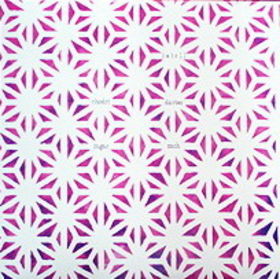 The very prolific Welsh harp player
The very prolific Welsh harp player